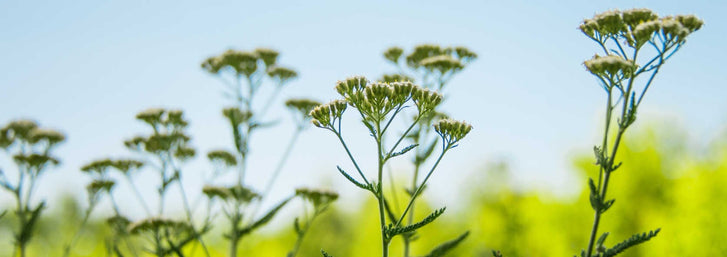
Erica Groneman

It’s that time of year when you get to feast upon the fruits of your labors and the harvest is in full swing. Have you ever considered pickling as a form of preserving your home grown produce?
I like to pickle all sorts of veggies: jalapeños, banana peppers, beets, green beans, garlic, you name it. Ironically I’ve never had much success personally with pickling cucumbers, but I know plenty of people who have!
Need a relish tray for that upcoming family dinner? No problem. Need to add an extra kick to those nachos for the big game? We’ve got you covered. Pickling is a yummy and creative way to preserve your produce for use in the months to come.
Let’s get started. First, what you put in is what you get out. So make sure to only use the best and highest quality produce (which of course starts with the premium quality seeds here at True Leaf).
Second, use a good recipe that your family enjoys. And when selecting a recipe, make sure to use one that follows proper preservation guidelines from the USDA canning guides. We would hate for anyone to get seriously ill because of the failure to follow proper guidelines. It really does matter.
Third, sometimes preserving takes time. Make sure to block out several hours to get the job done.
Here’s an example of a recipe my family enjoys. Happy canning!
Crisp Dilly Beans
Yield: Approx 7 quarts
- 10 pounds fresh green beans
- 10 cups distilled white vinegar
- 8 cups water
- 1 cup salt
- 2-3 garlic cloves, peeled, per jar
- 1 bunch dried dill weed, per jar
- ¼ tsp cayenne pepper, per jar
- Sterilize 7 quart size wide mouth jars with rings and lids and keep hot. Wash and trim tip off beans.
- In a large pot stir together the vinegar and water, and dissolve the salt until boiling. Keep brine hot.
- In each jar, place 2-3 peeled cloves of garlic, 1 generous bunch of dill and ¼ tsp cayenne pepper. Then tightly pack green beans into the jars so they are standing on their ends.
- Ladle the very hot brine into the jars, filling to within ½-¼ inch of the tops.
- Boil lids for 3 minutes, clean the tops of the jars, and process in a boiling water bath canner covered with at least 1 inch water for 35 minutes.
- Let dilly beans sit for at least 3 weeks before eating.
About the Author

Hi, I’m Erica Groneman. I am a mom, volunteer, and a gardener. There’s something satisfying about getting my hands dirty and watching things grow. I believe gardening is universal and crosses all boundaries, bringing us all together. I hope we can share in the joy of growing together. Thanks for stopping by!
Become a True Leaf Market Brand Ambassador! You’ll enjoy awesome perks, free products and exclusive swag & offers! Help us create a gardening revolution and help others experience the joy of growing!
Leave a comment
Your email address will not be published. Required fields are marked *
1 comments
Irina Rozentsveyg
hI, I did not understand the instruction #5 for pickling.
Further Reading

10 Natives of the Southwest USA for Pest Control
Written By Lara Wadsworth The Southwestern United States is a region incredibly unique to the rest of the country. The hot, dry weather can be challenging for plants and animals to thrive without additional help. That is why gardening with natives can ...

Ashleigh Smith
2024-04-157 min read0
Spring Into Action - Celebrating Earth Day
Written By Chelsea Hafer Spring is quickly arriving, and that means that Earth Day is near! Earth Day is the perfect occasion to appreciate our wonderful planet and all that it does for us and think of ways you can give back to it. In this blog post, w...

Ashleigh Smith
2024-04-154 min read0
Everything You Need To Know About Rain Gardens
Written By Lara Wadsworth Rain gardens are quickly gaining popularity for their perfect marriage of utility and beauty. What simply looks like a beautifully landscaped garden is actually a native habitat that serves as a storm drain and water sponge. B...

Ashleigh Smith
2024-04-085 min read1
Northeastern Natives for Attracting Beneficial Insects
Written By Lara Wadsworth The Northeastern United States is rich with American history, but did you also know that it is rich in plant biodiversity? Nature has learned through time how to work in harmony with the various species that attempt to thrive....

Ashleigh Smith
2024-04-086 min read1



